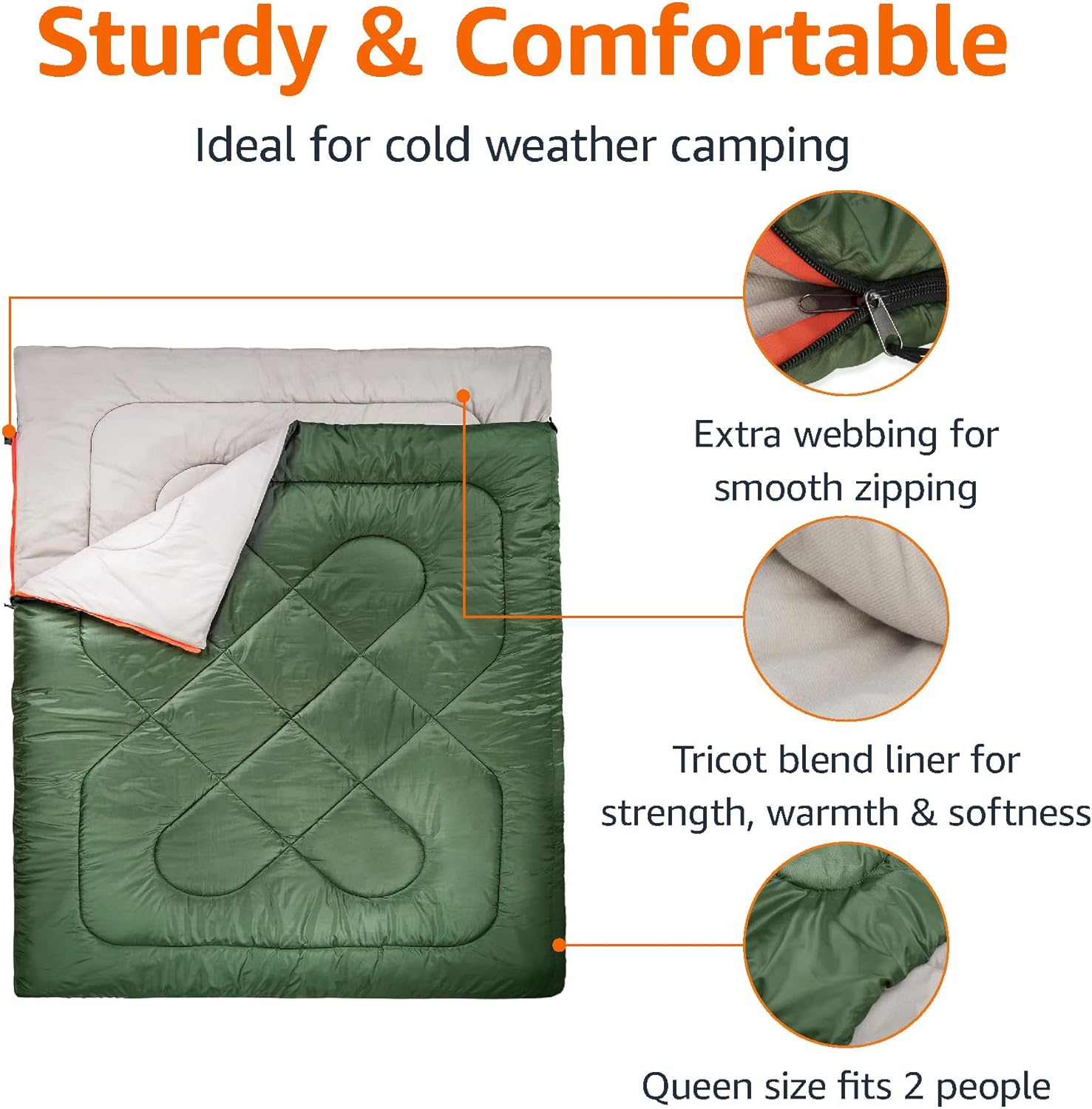Proper Food Safety
When Camping
Knowing proper food safety procedures - and following them! - will help to ensure that your family stays healthy and happy on your next camping trip.
Cooking and eating outdoors when you go camping is fun!
However, it's no fun worrying about whether your camping food is safe - and it's even less fun when someone gets a foodborne illness!
Fortunately, safe food handling is easy! Just follow a few common sense proper food safety guidelines about food temperature, handwashing and drinking water.
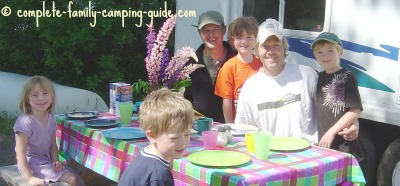
Proper Food Safety At Camp
Food temperature
You've heard this one before: keep hot foods hot and cold foods cold. But just how hot is hot, exactly?
Hot foods need to be above 140 F (that's 60 C).
Cold foods need to be below 40 F (4 C).
The danger zone between those temperatures is where bacteria thrive. It takes only a couple of hours for food in the danger zone to become dangerous.
Keeping food out of the danger zone is easy at home, and even at camp if you have an RV with a refrigerator and an oven. But what about when you are tenting?
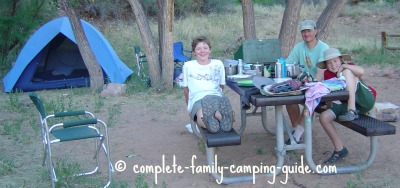
You'll need to take extra care to keep food in the safe temperature zone.
Keep hot foods hot
This is fairly straightforward. Just plan ahead and eat your hot foods as soon as they have been cooked.
Keep cold food cold
This can be trickier!
Most car campers use coolers. There are a variety of types available.
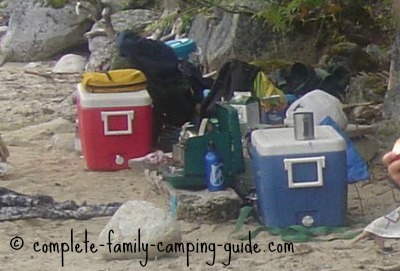
You'll know that your cooler is cold enough to keep your food safe as long as there is ice in the cooler. Once the ice has melted, food safety is no longer assured.
Keep the cooler full of ice
- Buy more ice as needed.
- Choose block ice. It lasts longer than ice cubes.
- Even better, make your own ice packs. Freeze a tetra pack of juice,
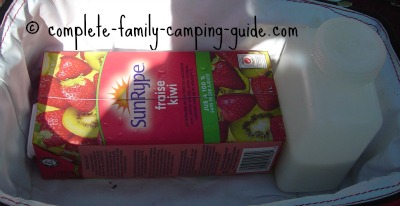
or fill an empty plastic bottle with water. Square 2 pint/1 litre bottles are the perfect size and shape. Be sure to leave room at the top for the water to expand as it freezes.
The beauty of these ice packs is that your cooler doesn't end up with a puddle of water on the bottom when the ice has melted!
Keep the cooler cool
The cooler you can keep the cooler (!), the longer the ice will last. Here are some tips:
- Transport the cooler in the coolest part of your vehicle. If your
vehicle is air conditioned, try to find a place for the cooler up front with you, rather than in the hot trunk.
- At camp, store the cooler in the shade.
- Keep the cooler closed as much as possible.
- Consider using two coolers: one for drinks and snacks, and one for everything else. The drinks cooler will be opened frequently, letting out the cold air.
Handwashing
Just as at home, proper handwashing is an important part of proper food safety - but it's a bit more challenging if you don't have running water.
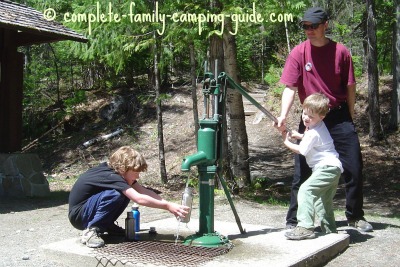
Safe food handling requires clean hands, though, and fortunately that's easy to accomplish with just a bit of thought.
If there's a camp bathroom close by, great! Just remember that it may or may not have soap. Take your own if you aren't sure. A packet of soap leaves is a handy thing to carry in your pocket.
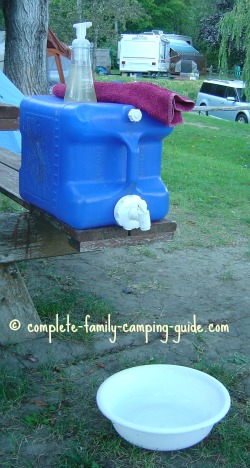
Even if there is a bathroom nearby, I set up a handwashing station at the picnic table, with a jug of water, a basin, a towel and a soap pump.
As always, wash your hands frequently:
- before cooking
- after using the bathroom
- after handling raw meat
- before eating
- whenever you think of it
Make sure that the kids wash their hands with soap before eating too.
Drinking water
Be sure that the water you use for drinking and cooking is safe.
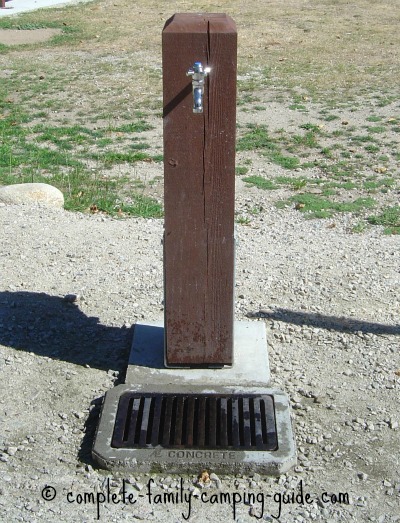
If you are in doubt, don't use it!
You can purify water by bringing it to a rolling boil for at least one minute, or by using a water purifier.
You should boil or purify not only water for drinking and food preparation, but also the water you'll use for washing vegetables and fruits and for brushing your teeth.
If you aren't sure about the safety of the water at your destination, carry a big jug of water from home.
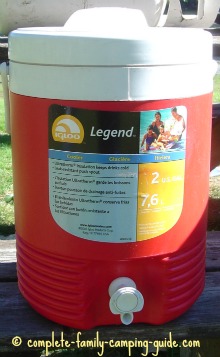
That way you won't have to wait to eat or drink when you get to your site.
If you're camping for just a couple of days, you might be able to bring enough for your entire trip.
Following these simple guidelines about proper food safety will ensure that your food for camping is as safe to eat as it is delicious! (By the way, I have lots of great camping food ideas! Click here for some inspiration.)
These guidelines apply to picnic food safety, too!
Now that you know about proper food safety, click here for more camping safety tips.
Remember to visit the Camping Family home page for lots of great camping ideas!
Most Popular
Product of the Month
Amazon Basics 40°F Cool Weather Two-Person Sleeping Bag
Cool weather is here!
CLICK HERE for more information and best price
Recent Articles
-
Camping Sites In Normandy France - We review some of the best!
Nov 24, 25 03:14 AM
We check and review a number of camping sites in Normandy France, and recommend the ones that we think are the best. -
Camping Sites In The South Of France; We Review Some Of The Best!
Nov 24, 25 02:46 AM
We check and review a number of camping sites in the south of France, and recommend the ones that we think are best! -
Camping Sites Near Paris France - Which One Should You Choose?
Nov 24, 25 02:42 AM
Find out which camping sites near Paris France are the best, and discover the camp sites near Paris to avoid!

